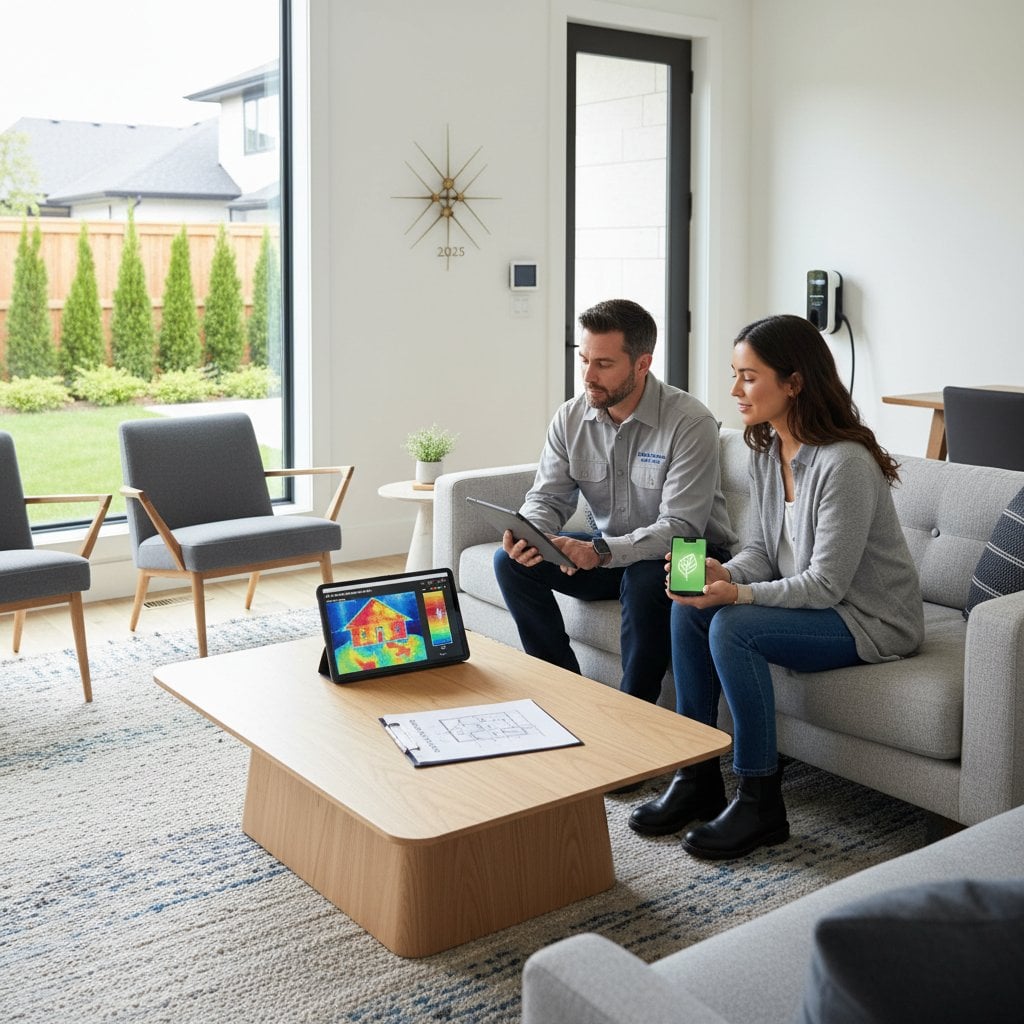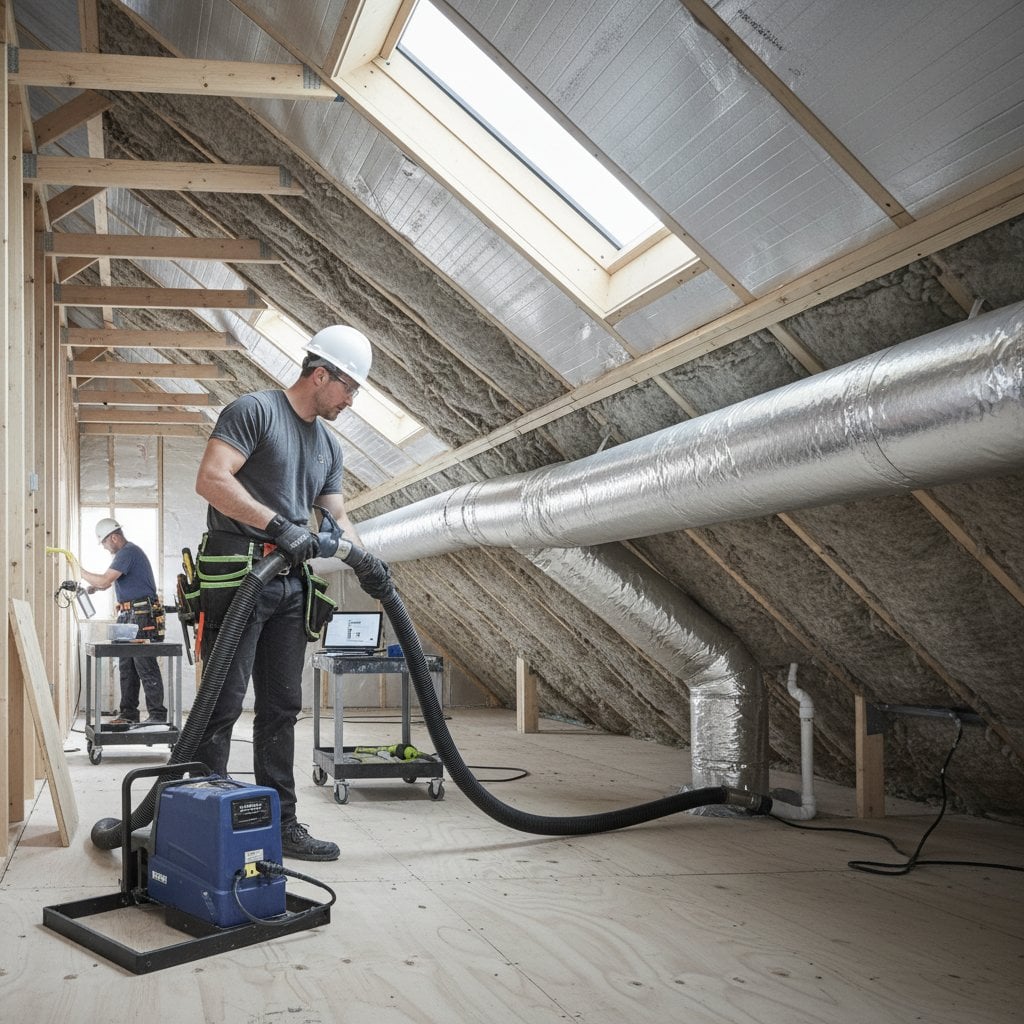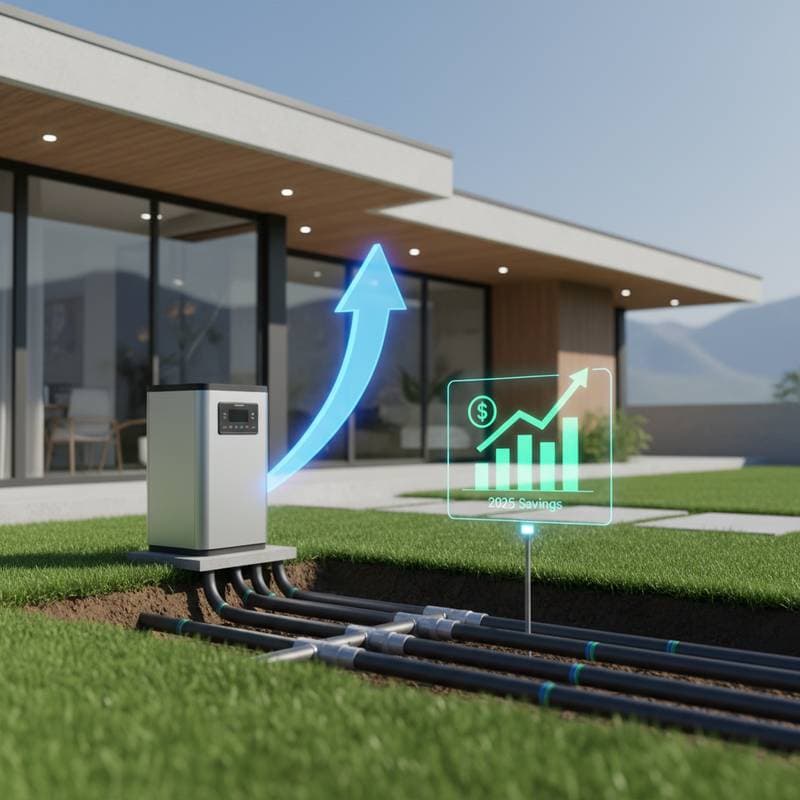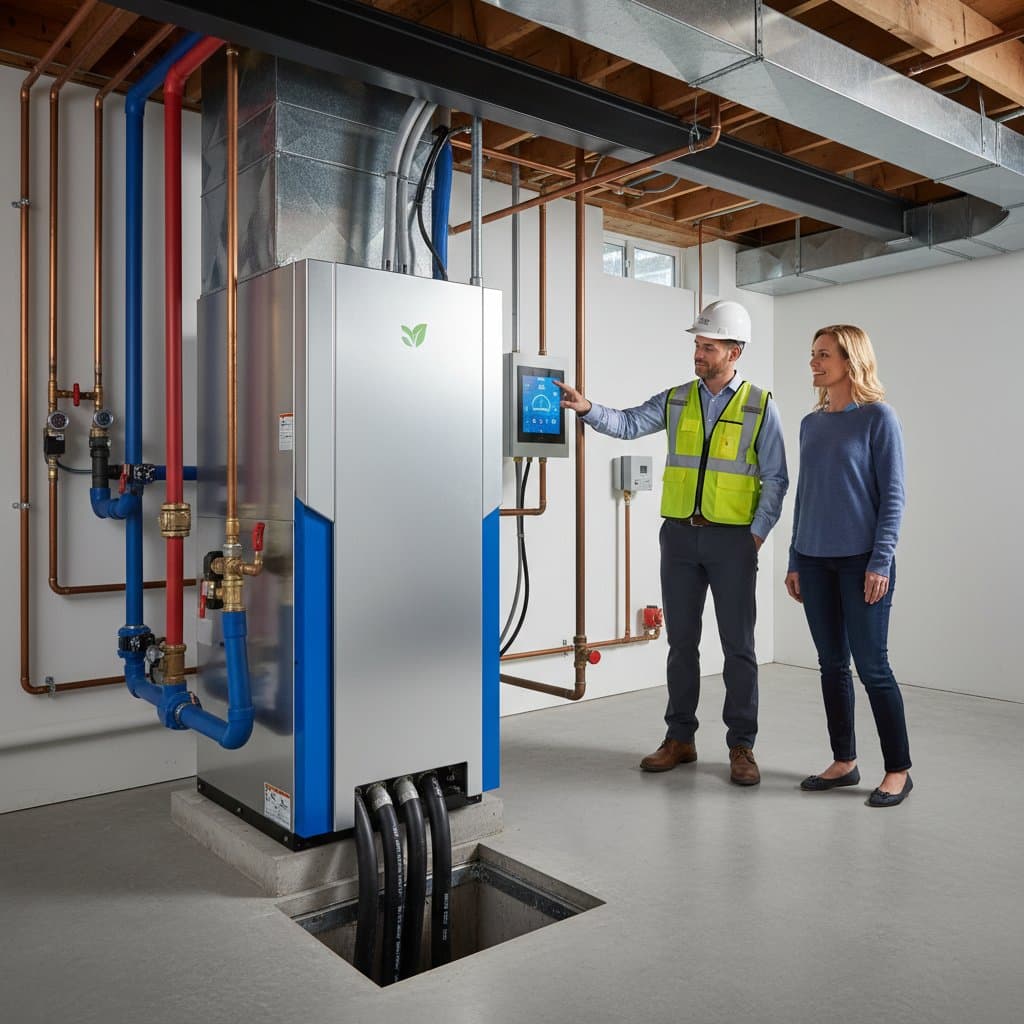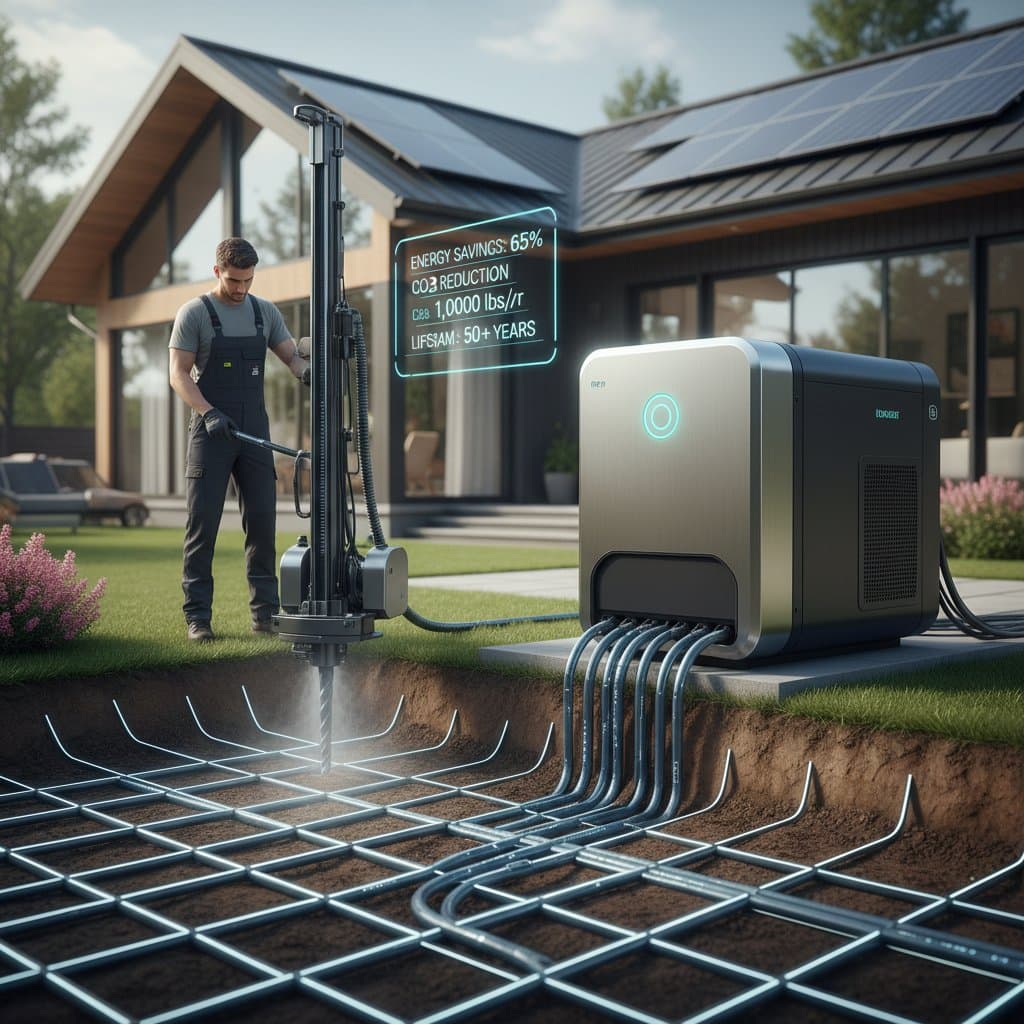Key Points
- Geothermal cooling uses ground-source heat pumps to regulate indoor temperatures by drawing on the steady conditions found several feet underground.
- Homeowners can expect cooling cost savings of 30 to 70 percent compared to traditional air conditioning systems.
- Despite the significant initial investment, long-term energy savings, government incentives, and superior durability make geothermal a smart option for both finances and the environment.
- The underground loops last for decades, outpacing the lifespan of standard HVAC systems.
- Key factors to consider include property size, soil conditions, budget, and the need for expert installation.
Why Geothermal Cooling Stands Out
Traditional air conditioners struggle against hotter outdoor temperatures, driving up energy use and costs. Geothermal cooling changes this equation by transferring heat to the cooler, more stable ground instead of fighting the hot outside air.
Several benefits set geothermal cooling apart:
- Financial Returns: The initial cost is high, but energy bill reductions build over time. Many homeowners recover their investment in seven to twelve years, depending on local energy prices and usage patterns.
- Superior Efficiency: These systems deliver three to five times the efficiency of standard air conditioners, providing more cooling for every unit of electricity used.
- Long-Term Durability: Ground loops often last over 50 years, while indoor components typically serve more than 20 years. This exceeds the 10- to 15-year life of conventional outdoor units.
- Boosted Home Value: Buyers seek homes with lower operating costs and green features. A geothermal system increases appeal and potential resale price.
- Eco-Friendly Impact: Lower energy needs mean reduced emissions, better air quality, and a smaller carbon footprint.
Breaking Down Costs and Calculating ROI
Many potential users pause at the upfront price, but a closer look reveals clear value.
- Installation Expenses: For an average home, costs range from $18,000 to $35,000, depending on loop type, soil quality, and system size.
- Yearly Savings: Heating and cooling bills drop by 40 to 70 percent. For a household spending $2,000 annually on HVAC, that translates to $800 to $1,400 in savings each year.
- Ongoing Maintenance: Expenses stay low due to fewer moving parts and protected underground components.
- Resale Premium: Studies show energy-efficient homes sell for 5 to 10 percent more, based on local market conditions.
When weighing the initial outlay against ongoing savings, equipment lifespan, and energy rebates, geothermal emerges as a solid financial choice.
Efficiency and Sustainability Advantages
Geothermal cooling goes further than cost savings by advancing sustainable living.
- Reliable Energy Source: Unlike solar or wind, which vary with weather, underground temperatures stay constant year-round.
- Easing Grid Strain: Power grids face overloads from widespread air conditioner use; geothermal runs steadily to reduce peak demand.
- Improved Indoor Air Quality: The system circulates indoor air without pulling in outdoor pollutants, cutting down on dust, allergens, and humidity swings.
With lower energy use and easier upkeep, geothermal benefits personal health and planetary health alike.
Steps for Installing Geothermal Cooling
Follow these steps to install geothermal cooling effectively:
- Evaluate Your Property: Check available land, soil type, and space for loops. Work with a certified geothermal designer to select the best setup, like horizontal, vertical, or pond loops based on your site.
- Gather Quotes from Experts: Get bids from several licensed installers, tailored to your home's size, insulation, and needs.
- Check for Incentives: Look into federal options like the 30 percent Investment Tax Credit, plus state rebates and utility discounts to lower costs.
- Design the Loop Layout: Position loops away from landscaping and utilities. Vertical loops require drilling 150 to 400 feet deep; horizontal ones use shallower trenches.
- Coordinate the Installation: The work takes one to two weeks. Have the team connect the heat pump to your existing ducts and run performance checks.
- Track and Maintain Performance: Use a smart thermostat to monitor usage post-installation, and book yearly professional checkups to keep efficiency high.
These steps ensure a smooth shift to geothermal, optimizing both performance and savings.
Frequently Asked Questions
Does geothermal cooling work only in new homes?
No. It installs easily in new construction, but retrofits work well in existing homes too. Experts adapt loop placement to fit current yards and link to present duct systems.
How does it stack up against high-efficiency air conditioners?
High-efficiency units rarely match geothermal's output. Geothermal moves heat with electricity instead of generating cold air, yielding three to five units of cooling per unit of energy.
Will the installation ruin my yard?
Some digging or drilling is involved, but experienced teams minimize impact and restore the area. Horizontal loops use trenches, and vertical ones create slim, deep holes.
Can it operate without ducts?
Yes. Pair it with radiant floors or ductless setups through custom design adjustments.
What kind of maintenance is needed?
Change filters regularly and get professional checkups now and then. The underground loops stay protected from weather, supporting long-term reliability.
Is it worth it if I might move soon?
Yes, thanks to the added resale value and appeal to eco-minded buyers. Long-term owners gain the full savings benefits.
Securing Comfort and Savings for the Long Haul
Geothermal cooling delivers even temperatures, quieter operation, and straightforward maintenance that pay off over time. It prepares homes for future efficiency and sustainability demands.
Assess your home, budget, and goals to decide next. Geothermal provides proven ways to tackle climbing energy costs.



